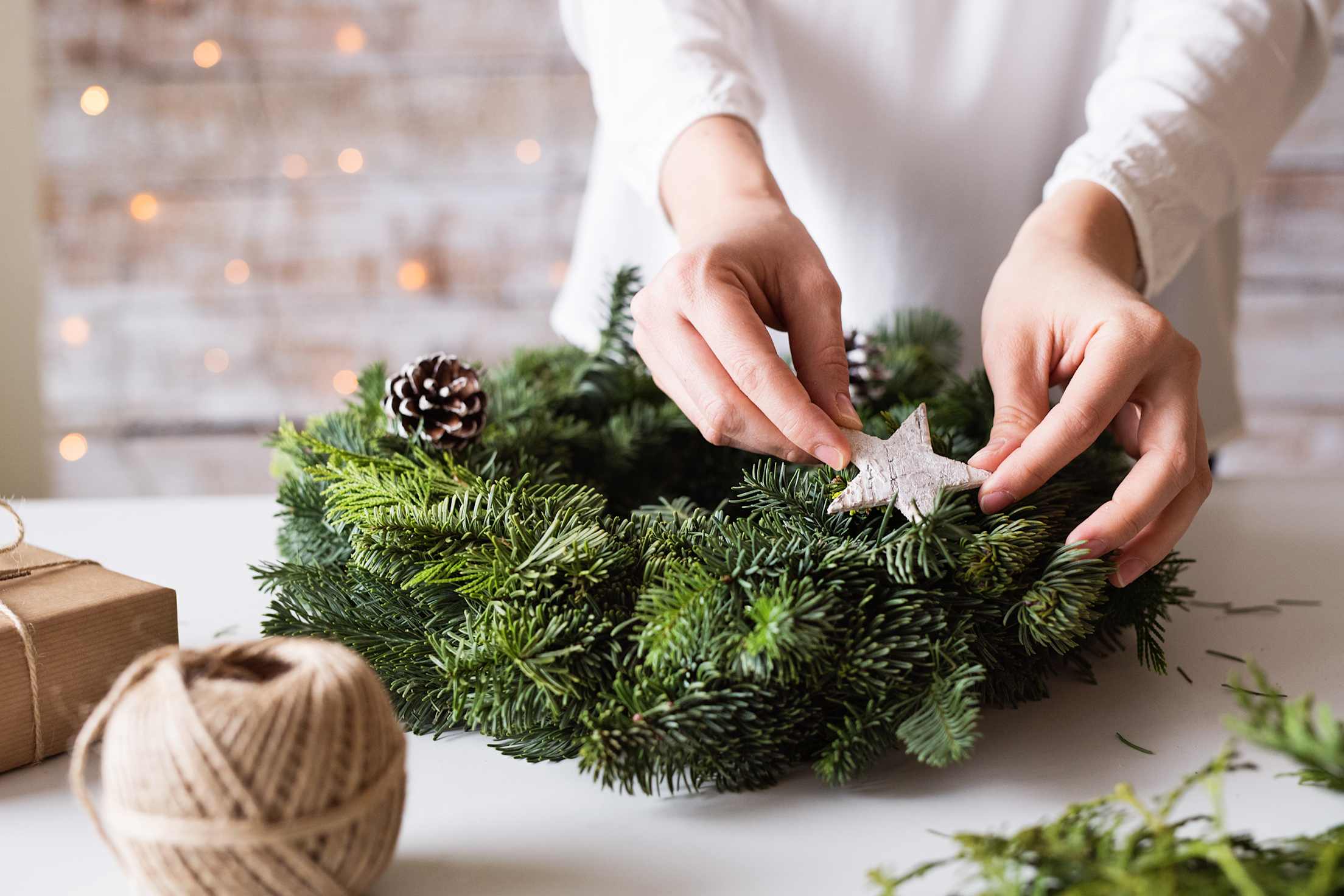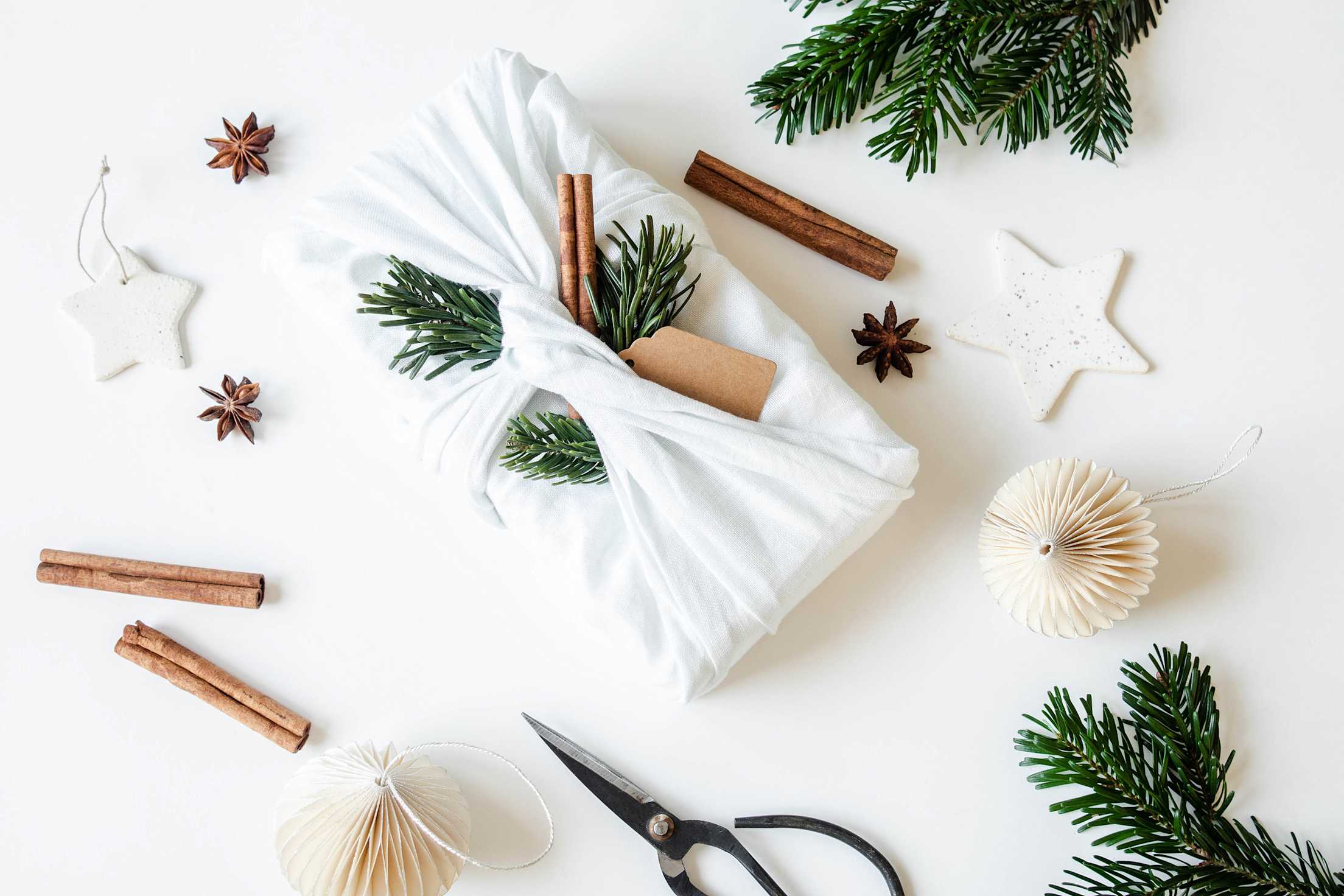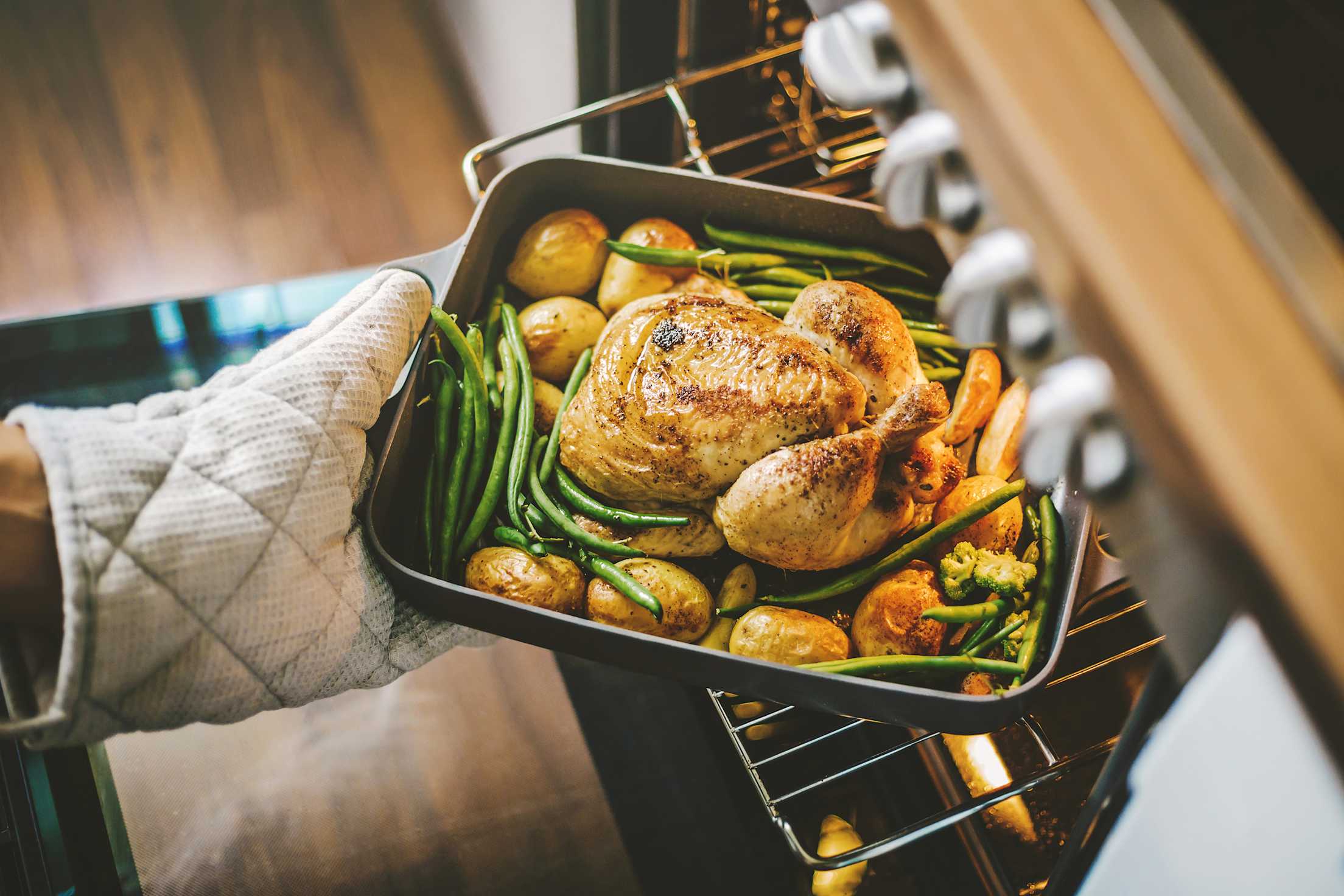
How to Reduce Holiday Waste
Start new, sustainable traditions that reduce your impact without minimizing joy.

With holiday cheer comes sparkling lights, plates piled high, and, unfortunately, overflowing garbage cans. Nationwide, more than 1 million tons of additional waste are tossed out each week from Thanksgiving to New Year’s Day. “Historically, the holidays are the biggest trash weeks of the year in the U.S.,” says Robert Reed, spokesperson for Recology in San Francisco. “We [typically] see about a 17 percent increase in the total tons of recycling, composting, and landfill trash we collect in San Francisco.”
But you can still revel and rejoice while reducing waste. These tips will help you celebrate more sustainably for years to come.
Modernize your season’s greetings.
We can all use extra joy and love in winter. Consider sending a photo e-card or a homemade video instead of a printed card. (Smilebox and Paperless Post offer customizable options.) If every household bought one less card this year, the U.S would save enough paper to print approximately 48 million copies of Harry Potter and the Sorcerer's Stone.
If you still want to mail a few special notes, choose cards made with recycled paper and avoid any that include glossy photos, foil details, plastic, or glitter. “Wrapping paper and holiday cards made from mixed materials are difficult or impossible to recycle.” Reed says. “There is no way to separate metal or glitter from paper.”
Check the packaging before you order.
Bubble wrap, packing peanuts, plastic mailers—online shopping can create heaps of waste destined for the landfill. Before you add anything to your cart, check to see if the retailer shares its packaging or shipment materials. When you can, opt for companies that use materials you can recycle or compost in your area, such as a cardboard box with crumpled paper for cushioning.
If there’s a spot to leave special instructions or a note for your order, Darby Hoover, senior resource specialist at Natural Resources Defense Council (NRDC) recommends asking for recyclable or plastic-free packaging.
Smart Tip: Skip shipping entirely with curbside pickup when available.

You can repurpose old shipping boxes and mailers to send holiday gifts, just be sure to remove any old labels or barcodes.
Ship gifts together.
“Don’t just order spontaneously when you find a good gift,” Hoover says. Instead, she recommends making sure you don’t want anything else from the merchant before completing your order, so items are more likely to be shipped together. Some online stores, including Amazon, also give you the option to put your shipment in as few boxes as possible.
If you’re going to be mailing gifts, Darby recommends bundling multiple presents into a single box and asking family to distribute them locally among your recipients, rather than sending numerous packages to the same city or area.
Smart Tip: Many online retailers have gift shipping options so you can send the order straight to the recipient.
Give experiences or consumable items.
“Think about ways you might be able to avoid packaging altogether when giving gifts,” Hoover says. A handmade treat, a bottle of wine, or a beautiful candle can often be presented without any embellishment, and they won’t end up in the landfill when your recipient is done with them. If you want to give something other than a physical item, consider:
- AAA Gift Membership;
- America the Beautiful National Parks pass;
- virtual experiences, such as online cooking classes;
- tickets to a virtual event, such as a live-streamed play or concert;
- gift cards;
- donation in the recipient’s name;
- or coupons for your time or a future activity together.

Look outside for beautiful decor.
Decorate with nature.
Evergreen garlands, sprigs of holly, and bunches of mistletoe aren’t the only decor the outdoors has to offer. Oven-dehydrated lemon and orange slices make sweet-smelling ornaments. Popcorn and cranberries can be strung together to replace tinsel or beads. Fallen leaves and winter squash are ideal to brighten up a table.
Whenever you can, avoid buying new plastic items and anything with glitter. “Scientists have called for a worldwide ban on glitter because much of it winds up in the oceans and then the stomachs of fish, turtles, and sea birds,” Reed says.
Repair holiday lights.
Don’t despair if your lights don’t shine the first time you plug them in. On some strands, particularly incandescent or older LEDs, a single burnt out or broken bulb can cause the whole string to go dark. But it’s easy to replace the bulb and get all of the lights glowing again.
Smart Tip: When your lights are beyond repair, companies such as HolidayLEDS can recycle them for you.

Common items around the house—like leftover fabric and old maps—can make great wrapping paper alternatives.
Get creative with wrapping.
Your grandma was on to something when she would carefully unwrap a gift, remove every piece of tape, and neatly fold the paper up for next year. While simple wrapping paper that tears and crumples easily is usually recyclable (check with your local provider), paper with glitter or metallic shine can’t be recycled, which means it’s destined for the landfill. “It takes a lot for my family to throw out a piece of wrapping paper,” says Hoover. “It really has to be dire.” Instead, you can reuse wrapping paper, tissue paper, ribbon, bows, decorative boxes, and gift bags for years.
When your stash runs out, reusable cloth wraps or bags are great long-lasting options, or you can repurpose materials around your house, including:
- old maps;
- comics;
- newspaper;
- butcher paper;
- plain brown craft paper or inside-out paper bags;
- twine;
- or leftover yarn.

Planning your holiday meals in advance can help reduce food waste.
Plan your meals with food waste in mind.
Approximately 316 million pounds of turkey meat are thrown away around Thanksgiving, according to ReFED, a nonprofit working to reduce food waste. But turkey isn’t the only thing going to waste. Up to 40 percent of food in the U.S. goes uneaten throughout the year, and most of it ends up in landfills where it creates methane, a global warming pollutant many times more powerful than carbon dioxide, says Hoover.
NRDC’s Guest-imater can help you quickly figure out how much you should make based on the number of diners, if you want leftovers, and what you wish to serve. As you plan your meal, think about what you want to do with any leftovers. If you don’t want to eat reheated turkey and gravy, pick out other dishes you can make with the components of your feast, such as turkey noodle soup or mashed potato pancakes, and get any ingredients you may need.
Smart Tip: If you can’t find a turkey small enough for your intimate gathering, consider downsizing to turkey breast, roasting a chicken, or going veggie instead.
When you’re cooking, set aside scraps to make turkey or vegetable broth. Once you’ve creatively used up as much as you can, compost anything that can’t be eaten or frozen for later. Leftovers can be placed into reusable containers, such as waxed food wraps, storage bags, repurposed jars, and glass containers.

Your everyday plates and glasses can be a part of a beautiful festive table.
Choose reusables.
Set the table with real linens, glasses, dishes, and cutlery. Use cloth napkins that can be easily tossed into the washing machine and used year-round. Cleanup doesn’t take that much longer with reusables, especially if you have a dishwasher. You’ll also save more water and energy washing up than if you were to toss out paper plates—a single one requires an estimated eight gallons of water to produce—not to mention that trees won’t need to be cut down. Using what you already have can prevent waste that will outlive everyone at your gathering. Plastic glasses and utensils, for example, typically cannot be recycled, and they can last more than 1,000 years in a landfill before breaking down.
Trade-in, sell, or recycle old electronics.
Receive a new gadget? You can trade-in or responsibly recycle many older electronics through Amazon, Apple, Best Buy, and Google. You can also search for a nearby e-waste drop off through E-Stewards. Usable electronics can be donated to organizations such as Cell Phones for Soldiers.
Follow the rules.
One of the best ways to ensure that your waste will be composted or recycled as intended is to pay careful attention to what your local municipal waste company takes. You can often find a materials chart and instructions online for your area. In most cases, recyclables should be clean, dry, and loose (not in a bag) before going into your bin. “Mills that buy bales of finished recyclables reject materials that are wet or contaminated with food or liquids,” says Recology’s Robert Reed. Cardboard boxes should be broken down to save space, and filmy, flexible plastic should not be put into your recycling unless explicitly allowed because they are difficult to recycle and can clog machines.
Recycle your tree.
Many cities will pick up real Christmas trees in early January and turn them into mulch or burn them to generate electricity. Be sure to mark the date so you don’t miss it. Before you put your tree out, double check you removed all of your lights and decoration. If it’s taller than 6 feet, you’ll likely need to cut your tree in half. Trees with fake snow, tinsel, or flocking cannot be recycled.
Give someone you care about the security and savings of AAA Membership.